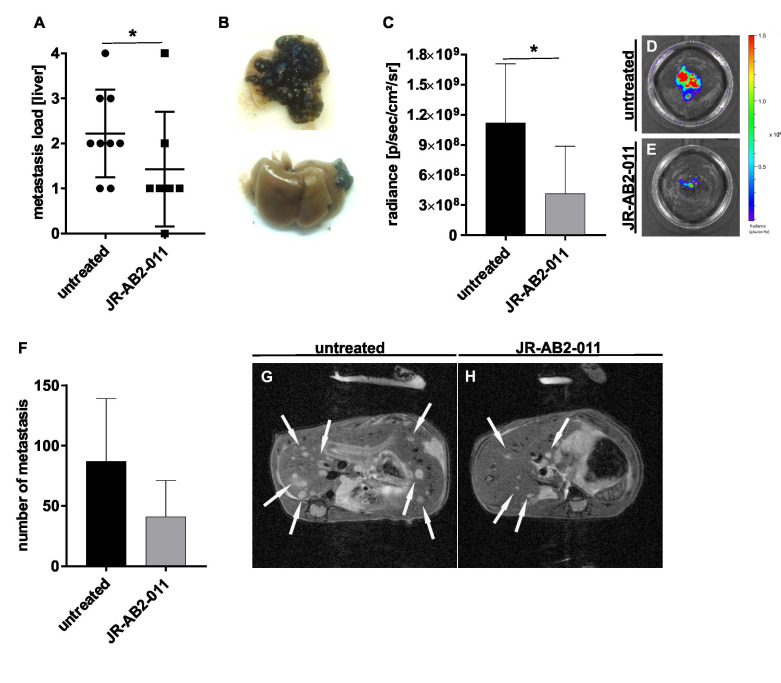Figure 5.
Pharmacological inhibition of mTORC2 reduced the metastasis load in the liver of a syngeneic mouse model. The reduction of the metastasis load in the liver after treatment with JR-AB2-011 was investigated by a mouse model with a splenic injection of B16 murine melanoma cells. The load of total metastasis of untreated controls and treated animals was macroscopically scored after dissection (0 = no tumor load; 1 = very low tumor load; 2 = low tumor load; 3 = medium tumor load; 4 = high tumor load) and indicates a significant reduction of total metastasis (p = 0.01) (n = 16) (A). Representative images (B) show the characteristic of classification type 4 (up) and type 1 (down). Due to the use of luciferase-marked B16 cells, the radiance of the metastasis in the murine liver was measured by bioluminescence imaging and found statistically significant (p = 0.01) (n = 16) (C). Asterisks (* p ≤ 0.05) indicate significance between treatment and untreated control. Representative images of BLI measurement show the radiance of the dissected liver of untreated (D) and treated mice (E). The number of single metastasis in the liver was assessed and quantified by MRI measurement with 30 slices, covering the whole liver (p = 0.25) (n = 6; 3/group) (F). White arrows in representative images of MRI show exemplary metastasis of untreated (G) and treated mice (H).

